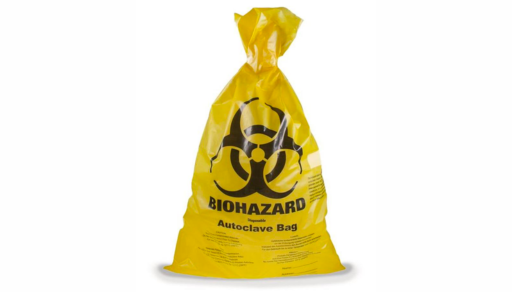Biohazard bags are an essential part of any medical or laboratory setting. These bags are specifically designed to hold and dispose of potentially contaminated waste materials like blood, bodily fluids, and other hazardous materials. In this article we’ll provide an overview of biohazard bags, their types, and their different uses.
Types of Biohazard Bags
There are several types of biohazard bags available in the market, each designed for a specific purpose. Below are the most common types of biohazard bags:
Clear Biohazard Bags
Clear biohazard bags are suitable for non-contaminated waste materials or low-risk biohazardous waste, where the primary requirement is to segregate waste for proper disposal. Clear biohazard bags are typically made from transparent polyethylene material, allowing for easy visibility of their contents. They are designed with a simple, single-ply construction for lightweight and non-contaminated waste materials.
Red Biohazard Bags
These bags are commonly used for non-infectious anatomical waste, including blood, bodily fluids, and other infectious materials. Their robust construction makes them ideal for securely containing potentially hazardous waste. Red biohazard bags are usually made from a thicker and more durable polyethylene material. This construction ensures that the bag can safely contain potentially infectious materials without risk of tears or leaks.
Yellow Biohazard Bags
Yellow biohazard bags are used to dispose of infectious clinical waste, and dressings, swabs, or other materials that have been contaminated by medicines or chemicals, as well as bodily fluids. These bags are sometimes marked with the word “Clinical Waste” in bold lettering. Their sturdiness ensures safe containment of potentially hazardous clinical waste. They are typically made from a strong polyethylene material with a thicker gauge to prevent any leakage or punctures.
Orange Biohazard Bags
Orange biohazard bags are used to dispose of clinical and infectious waste that has not been contaminated by any chemicals or medicine. Both non-hazardous and hazardous waste that has come into contact with individuals known or suspected to be carrying an infectious disease should go into the orange biohazard bag. Orange biohazard bags are manufactured from a durable polyethylene material similar to red biohazard bags. This construction provides strength and integrity to the bag, reducing the risk of tears or breaches.
Uses of Biohazard Bags
Biohazard bags are used in a variety of settings, including hospitals, laboratories, and research facilities. Below are some of the most common uses of biohazard bags:
Medical Waste Disposal
One of the most common uses of biohazard bags is for medical waste disposal. These bags are used to dispose of various waste materials, including syringes, bandages, gloves, and other medical equipment. Medical waste can be contaminated with various pathogens, including bacteria, viruses, and fungi, which can pose a serious health risk if not disposed of properly.
Laboratory Waste Disposal
Biohazard bags are also commonly used in laboratory settings to dispose of hazardous materials, such as chemicals and other hazardous substances. These bags are designed to prevent the spread of contamination and contain any hazardous materials that may be present in the waste.
Research Waste Disposal
In research facilities, biohazard bags are used to dispose of contaminated materials, such as animal carcasses, tissues, and other biological materials. These bags are essential for preventing the spread of contamination and ensuring that waste materials are disposed of safely and efficiently.
Emergency Response
Biohazard bags are also used in emergency response situations, such as natural disasters or outbreaks of infectious diseases. These bags are used to safely dispose of contaminated materials and prevent the spread of disease.
Biohazard bags are an essential part of any medical, laboratory, or research facility. These bags are designed to hold and dispose of potentially contaminated waste materials, including blood, bodily fluids, and hazardous materials. It is important to use the appropriate type of biohazard bag for the waste material being disposed of to ensure that it is properly contained and disposed of safely. By understanding the different types of biohazard bags and their uses, you can ensure that your facility is equipped with the appropriate materials to safely and efficiently dispose of hazardous waste materials. We offer biohazard bags on our website. You can either browse through our catalogue or contacts us so that we can help you find the biohazard bag you’re looking for or other lab products.

